What is the Longest Beach in Washington State?
The scenic and expansive Long Beach Peninsula is the Longest Beach in Washington, consisting of approximately 28 Miles of pure beauty. It is also one of the longest continuous beaches in the United States. Known for its dramatic beaches, vibrant history, and natural beauty, the Long Beach Peninsula has become a popular destination for locals and tourists. Let’s delve into the history, geology, geography, flora, and fauna of Long Beach Peninsula to uncover its fascinating story.
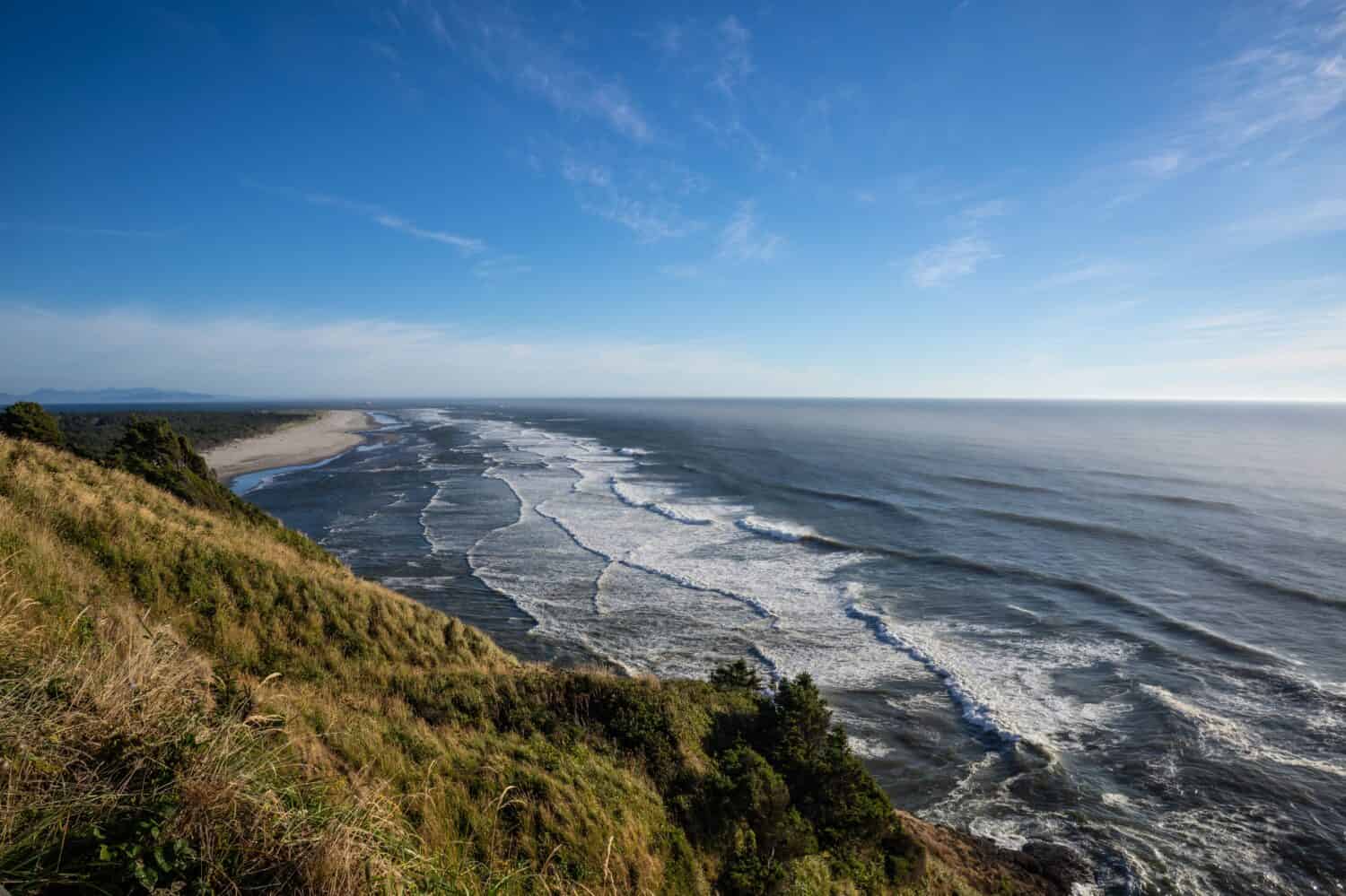
©Mariusz S. Jurgielewicz/Shutterstock.com
The History of Long Beach Peninsula
The history of Long Beach Peninsula dates back thousands of years when Native American tribes, such as the Chinook, inhabited the region. These indigenous communities thrived along the coastal area. The Chinook people had a deep connection with the land and sea, and their heritage is still celebrated and honored in the region today.
The arrival of European explorers in the late 18th century marked a new chapter in the history of the Long Beach Peninsula. They opened up trade opportunities and established a connection between the Pacific Northwest and the rest of the world.
During the mid-19th century, the prospect of logging attracted settlers to the Long Beach Peninsula. Logging operations flourished, and the abundance of timber resources supported the growth of the local economy. However, it was only with the completion of the Ilwaco Railway in 1889 that Long Beach Peninsula experienced significant development. The railway provided a vital transportation link and facilitated tourism, making the pristine beaches of Long Beach accessible to visitors from afar.

©Mariusz S. Jurgielewicz/Shutterstock.com
The Geology of Long Beach Peninsula
Long Beach Peninsula’s geology is shaped by its coastal setting and the dynamic forces of nature. The peninsula extends approximately 28 miles and parallels the Pacific Ocean to the west and Willapa Bay to the east. It is primarily composed of sedimentary deposits, including sand, silt, and clay. These deposits result from the constant erosion and sedimentation processes driven by ocean currents and the nearby Columbia River.
One of the most iconic geological features of Long Beach Peninsula is its expansive sandy beach, stretching for about 28 miles along the Pacific coast. The sand comprises finely ground particles derived from ancient riverbeds, coastal bluffs, and marine organisms. This vast expanse of beach provides a stunning backdrop for beachcombing, kite flying, and other recreational activities.
In addition to its sandy beach, Long Beach Peninsula boasts diverse ecosystems that support a wide array of plant and animal life. The region is home to rich estuarine habitats, salt marshes, dunes, and wetlands. These habitats provide essential nesting grounds and feeding areas for numerous bird species, including migratory shorebirds and waterfowl.

©Christina L Miller/Shutterstock.com
The Geography of Long Beach Peninsula
Long Beach Peninsula, the longest Beach in Washington, has a diverse geography that allows visitors to explore unique landmarks and attractions.
Cape Disappointment State Park
This State Park is a must-visit destination on the Long Beach Peninsula, with rugged cliffs and old-growth forests. The park not only offers stunning coastal scenery but also boasts historical significance. Visitors can explore the Lewis and Clark Interpretive Center within the park, which provides insights into the famous Lewis and Clark Expedition’s arrival in the Pacific Ocean. The park also encompasses North Head Lighthouse and Cape Disappointment Lighthouse, offering panoramic coastline views.
Willapa National Wildlife Refuge
Located on the eastern side of the Long Beach Peninsula, the Willapa National Wildlife Refuge encompasses over 17,000 acres of diverse habitats, including tidal marshes, mudflats, and old-growth forests. The refuge is a crucial stopover for migratory birds along the Pacific Flyway. It provides sanctuary for numerous species, including shorebirds, waterfowl, and raptors. Visitors can enjoy birdwatching, hiking along nature trails, and photography while exploring this scenic refuge.
Leadbetter Point State Park
Situated at the northern tip of the peninsula, Leadbetter Point State Park is a pristine coastal park that offers a tranquil escape into nature. The park features sandy beaches, dunes, and saltwater marshes, providing habitats for various wildlife, including nesting seabirds and marine mammals. Visitors can hike along the trails, go beachcombing, or enjoy a picnic while taking in the Pacific Ocean’s and Willapa Bay’s breathtaking views.
Pacific Pines State Park
Nearby on the western shore of Willapa Bay, Pacific Pines State Park is a gem offering a peaceful outdoor setting. The park features forested areas with towering pine trees, freshwater streams, and a beach with expansive views of Willapa Bay. Furthermore, visitors can go fishing, clamming, birdwatching, or relax and enjoy the serenity of this picturesque park.
Long Island Unit of Willapa National Wildlife Refuge
Situated just off the east coast of the Long Beach Peninsula, the Long Island Unit is a remote and rugged island that is part of the larger Willapa National Wildlife Refuge. Accessible only by boat, this uninhabited island provides valuable nesting habitat for seabirds and offers a sense of solitude and wilderness to those who venture there. It is an ideal location for wildlife observation, beachcombing, and exploring tidal pools.
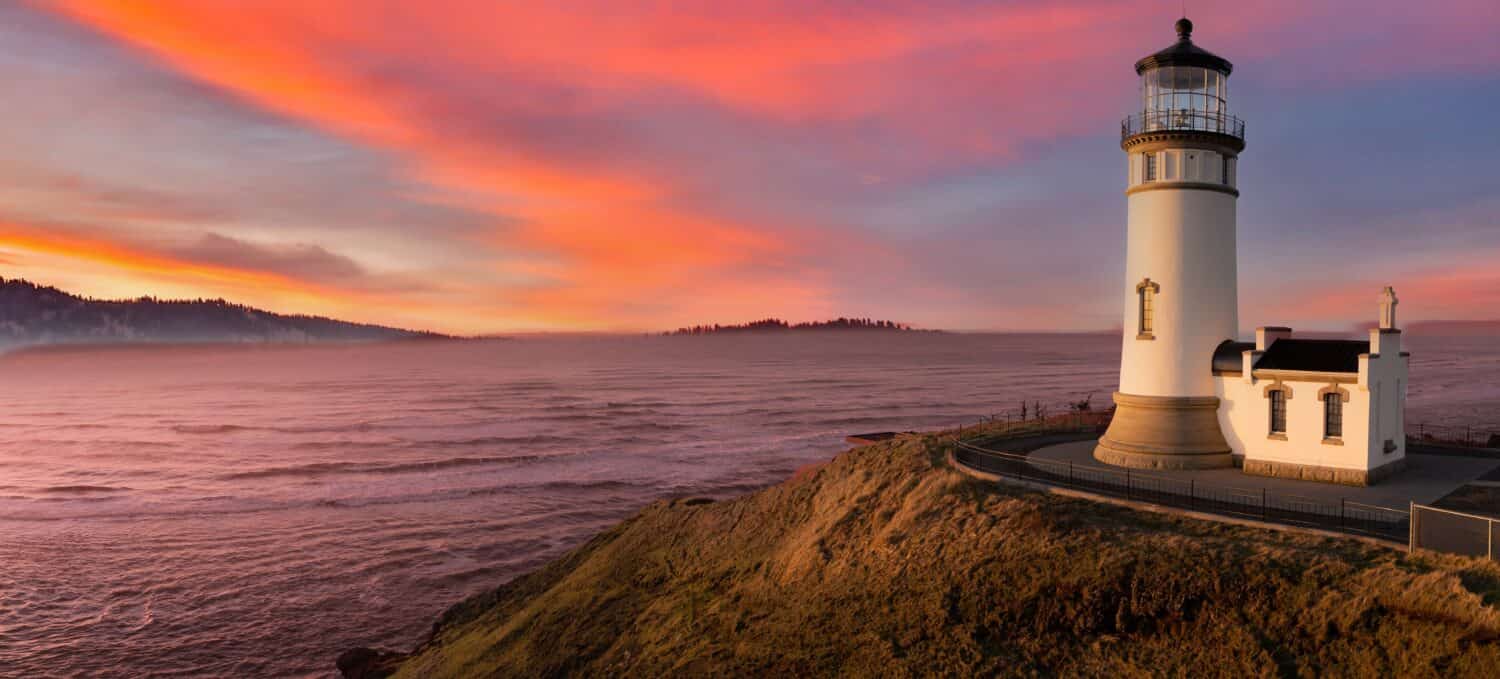
©Bob Pool/Shutterstock.com
Things to Do at Long Beach Peninsula
The longest Beach in Washington, Long Beach Peninsula, has many opportunities and experiences to enjoy. The town of Long Beach itself is a charming coastal community renowned for its vibrant atmosphere and annual events. There are many other popular year-round attractions, such as the iconic Long Beach Boardwalk, which stretches for half a mile along the oceanfront. The boardwalk also features benches and picnic areas, perfect for relaxing and enjoying a beachside picnic.
Camping
Long Beach Peninsula has options to suit different camping styles and preferences.
Cape Disappointment State Park offers multiple campgrounds for visitors to enjoy, with basic campsites, yurts, cabins, and unique historic vacation homes to meet diverse lodging needs. Moverover, camping is available year-round. There are 137 standard campsites, 50 full-hookup sites, 18 partial-hookup sites with water and electricity, and five primitive hiker or biker campsites. The primitive sites are first come, first served, but visitors can make reservations for the other campsite options on the Washington State Parks and Recreation Commission. There is one dump station, eight restrooms (two of which are ADA), and 14 showers (four of which are ADA). The park also provides amenities such as picnic areas. It offers easy access to the park’s hiking trails, beaches, and historic landmarks.
Long Beach Peninsula also has private campgrounds that cater to different camping preferences. These campgrounds often provide a range of amenities, including full hookups, Wi-Fi, laundry facilities, and nearby access to recreational activities. Some private campgrounds also offer cabin rentals and RV storage options.
Campground availability and specific amenities may vary, so it’s recommended to check with individual campgrounds for the most up-to-date information and to make reservations in advance, especially during peak seasons.
Fishing and Crabbing
Long Beach Peninsula is a popular destination for fishing enthusiasts. Here, you can cast a line from the beach or book a fishing charter to explore the abundant waters of the Pacific Ocean. Crabbing is another favorite activity, with opportunities to catch Dungeness crabs in the nearby bays and estuaries.
Horseback Riding
Several local stables offer guided horseback rides along the beach, allowing you to enjoy the stunning coastal scenery while creating unforgettable memories.
Festivals and Events
Long Beach is known for its vibrant festivals and events throughout the year. The Long Beach Razor Clam Festival celebrates the region’s rich clamming heritage, featuring clam-digging demonstrations, live music, and delicious clam chowder. Moreover, the Beach to Chowder 5K/10K run takes participants along the beautiful shoreline. The Long Beach Kite Festival, held every August, attracts people worldwide who showcase their colorful creations against the backdrop of the ocean and clear blue skies. The town also hosts the annual Washington State International Kite Festival, a week-long celebration of kites featuring awe-inspiring aerial displays and family-friendly activities.
Museums
Long Beach is home to the World Kite Museum, and rightly so, as it is also home to multiple kite festivals. Marsh’s Free Museum, established in 1935, has been a unique and quirky local experience. You can explore a collection of strange and unusual artifacts, including antique gambling machines, a two-headed calf, and Jake the Alligator Man. The Cranberry Museum is another popular educational experience of the cranberry industry that highlights the region’s history, cultivation, and harvesting of cranberries.
Dining and Shopping
Long Beach offers various dining options, from casual seafood shacks to fine dining establishments. Indulge in fresh seafood, including locally caught Dungeness crab and Pacific Northwest salmon. Additionally, explore the town’s unique shops and boutiques, which offer a range of merchandise, including local artwork, beach-themed souvenirs, and handcrafted items.
Seasonal Experiences
Long Beach Peninsula comes alive in spring with blooming wildflowers and migrating birds. Enjoy birdwatching as thousands of shorebirds make their way along the coast. Spring is also an excellent time for beachcombing and exploring tide pools, as the ocean brings forth an abundance of treasures.
Summer is the peak season in Long Beach Peninsula, offering the warmest weather and the most vibrant atmosphere. Visitors can bask in the sunshine, swim in the cold ocean, and partake in outdoor activities such as boating, surfing, kayaking, paddleboarding, or beach volleyball. The town comes alive with events and festivals, providing a lively and festive atmosphere.
Fall brings mild weather and fewer crowds, making it an ideal time to enjoy the natural beauty of Long Beach Peninsula. Take scenic hikes, go crabbing, or explore the local shops and galleries. Fall is also known for its stunning sunsets, which paint the sky with vivid hues of orange and pink.
Finally, winter offers a serene and peaceful experience in Long Beach Peninsula. Enjoy long walks on the beach, storm-watching, and cozy evenings by the fire. The town transforms into a tranquil retreat, providing a quiet escape from the bustling summer season.
The Best Time to Travel
The best time to visit Long Beach Peninsula depends on personal preferences. Summer is the peak season for the best weather and the liveliest atmosphere. However, if you are okay with wetter weather, fewer crowds, and opportunities for birdwatching or storm watching, spring and fall are excellent choices. Winter provides a serene and tranquil experience for those seeking solitude and peaceful beach walks but is also met with chilly temperatures and consistent rainfall.
Whether camping at one of the local campgrounds, attending vibrant events, immersing yourself in nature, or simply enjoying the beach, Long Beach Peninsula offers a diverse range of popular activities and experiences for visitors throughout the year.
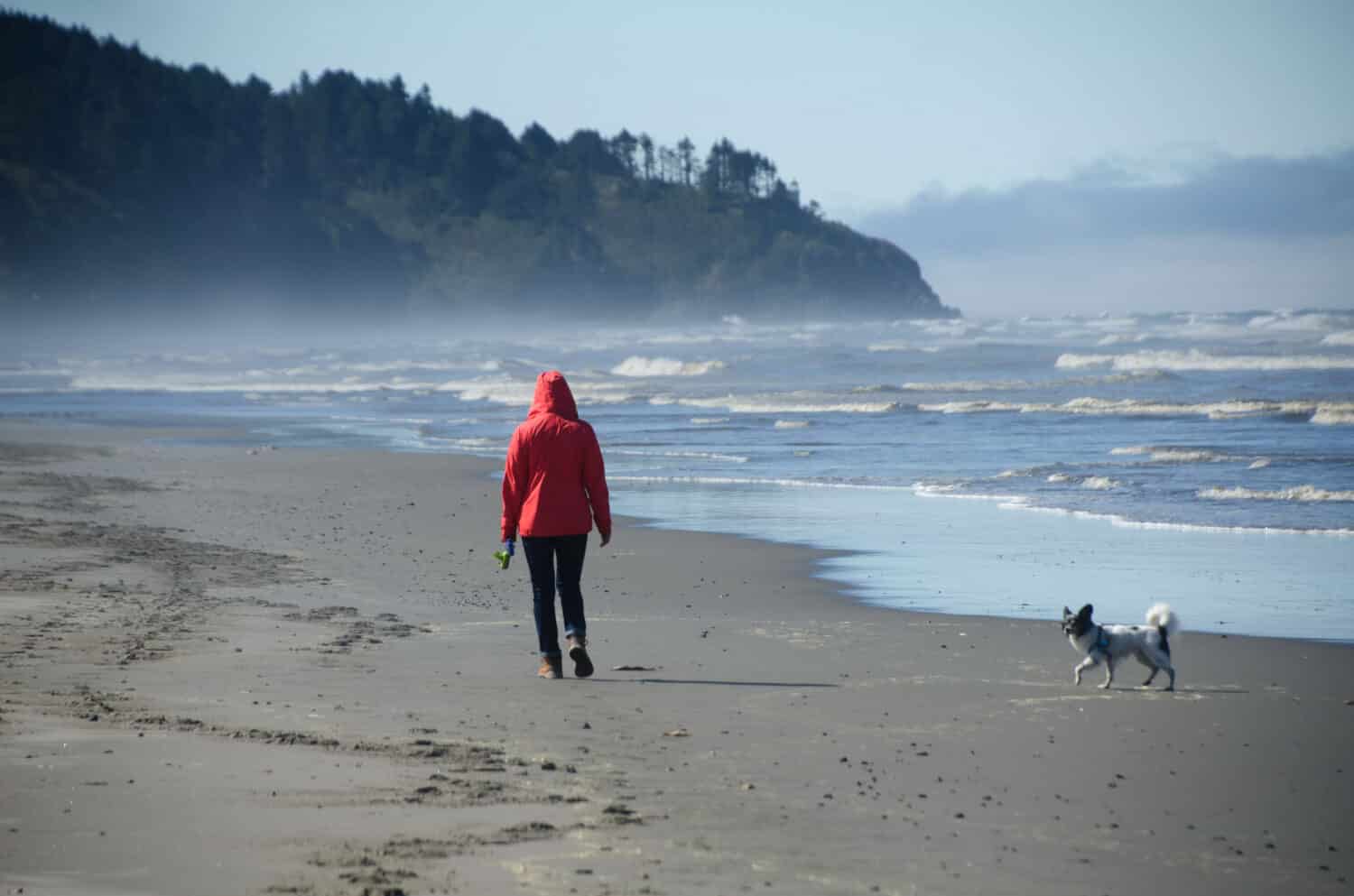
©Dmitri Kotchetov/Shutterstock.com
Animals Found at Long Beach Peninsula
As the longest Beach in Washington, Long Beach Peninsula is home to many species of animals. From majestic whales to playful seals and an abundance of fish species, this coastal ecosystem supports a thriving community.
Gray Whale (Eschrichtius robustus)
Visitors can spot the gray whales off the coast of Long Beach Peninsula. These whales undertake one of the longest migrations of any mammal, traveling between their Arctic feeding grounds and breeding grounds in the warmer waters of Baja California. Gray whales are year-round residents of the coastal waters. However, their sightings are prevalent during their northward migration from March to May and their southern migration from December to February.
Harbor Seal (Phoca vitulina)
Harbor seals are a familiar sight along the shores of Long Beach Peninsula. These charismatic pinnipeds are often basking on rocky outcrops or swimming in the waters near the coast. In addition, harbor seals are year-round residents and rely on coastal habitats for resting, breeding, and foraging.
California Sea Lion (Zalophus californianus)
California sea lions spend time in the waters around Long Beach Peninsula. These social and vocal animals are known for their agility in the water and charismatic attitudes. California sea lions are year-round residents and use coastal areas for breeding and resting.
Pacific Herring (Clupea pallasii)
The Pacific herring is a small fish species found in the waters around Long Beach Peninsula. They play a significant ecological role as a prey species. They are an important food source for larger fish, marine mammals, and seabirds. Moreover, Pacific herring undertake extensive migrations, moving between their spawning grounds in open water and their feeding areas along the coast.
Coho Salmon (Oncorhynchus kisutch)
Coho salmon are anadromous fish that inhabit the coastal waters of the Long Beach Peninsula. They spend part of their lives in freshwater streams and rivers before migrating to the ocean to feed and grow. Coho salmon return to their natal streams to spawn, undertaking remarkable migrations contributing to the ecosystem’s overall health.
Surfperch (Embiotocidae family)
Surfperch is a diverse group of fish species found along the sandy shores of Long Beach Peninsula. They are known for their ability to ride the waves, often seen in shallow waters close to the surf zone. Common species include the Redtail Surfperch (Amphistichus rhodoterus) and the Walleye Surfperch (Hyperprosopon argenteum).
Bald Eagle (Haliaeetus leucocephalus)
While not exclusively marine, bald eagles frequent the coastline of Long Beach Peninsula. These majestic birds of prey are known for their distinctive white heads and impressive wingspans. They perch on trees or soar high above, often scavenging for food near the water’s edge. Bald eagles are year-round residents and nest in the area.
Furthermore, these are just a few examples of the common animals found here. The coastal ecosystem is rich in biodiversity, supporting a variety of marine mammals, fish species, and seabirds throughout the year.
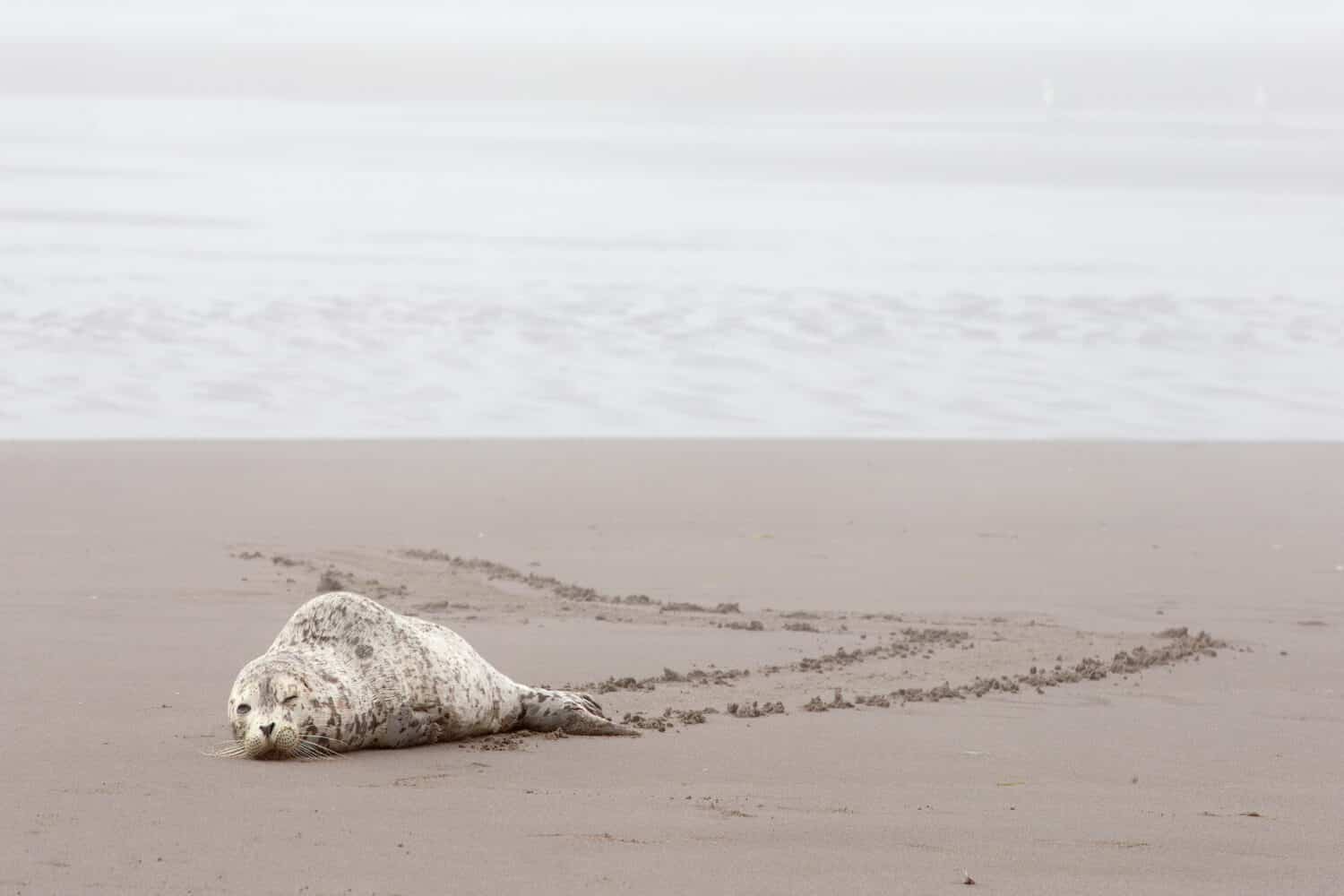
©oksana.perkins/Shutterstock.com
Plants Found at Long Beach Peninsula
Long Beach Peninsula’s flora adds to the landscape’s beauty. It is home to various plants that thrive in the coastal environment.
American Beachgrass (Ammophila breviligulata)
American beachgrass is a key plant species found on the sandy dunes here. It is known for its ability to stabilize dunes and prevent erosion. Additionally, this grass forms dense clumps and has long, narrow leaves that help trap blowing sand, allowing for dune formation. Its extensive root system helps anchor the dunes, providing stability to the coastal ecosystem.
Sea Rocket (Cakile spp.)
Sea rocket is a genus of flowering plants that includes several species found along the shores of Long Beach Peninsula. They have fleshy leaves and produce small, four-petaled flowers. Sea rocket has adapted to the sandy and salty conditions of the coastal environment. It often grows in the sand dunes or along the beach.
Beach Evening Primrose (Camissonia cheiranthifolia)
Beach evening primrose is a coastal wildflower that adds vibrant color to the dunes and sandy areas. It has yellow, cup-shaped flowers that bloom in the evening, attracting pollinators such as moths and bees. Moreover, this hardy plant thrives in sandy soil and can withstand harsh coastal conditions.
Beach Pea (Lathyrus japonicus)
Beach pea is a perennial legume found along the coastal regions of the Long Beach Peninsula. It has sprawling vines that produce clusters of purple flowers followed by elongated seed pods. This plant stabilizes dunes and enriches the soil with nitrogen through its symbiotic relationship with nitrogen-fixing bacteria.
Beach Strawberry (Fragaria chiloensis)
Beach strawberry is a low-growing plant that forms spreading mats along the sandy shores here. It produces small, white flowers and sweet, edible berries. The beach strawberry is well adapted to the coastal environment and can tolerate salt spray and shifting sands.
Salicornia (Salicornia spp.)
Salicornia, also known as pickleweed or sea asparagus, is a succulent plant found in the marshy areas along the shores of Long Beach Peninsula. It has jointed stems and small, scale-like leaves. Salicornia is highly tolerant of saltwater and thrives in saline marshes and tidal flats.
Furthermore, these are just a few examples of the common plant species in and around Long Beach Peninsula. The coastal environment supports a unique assemblage of plants that adapted to the area’s sandy, salty, and dynamic conditions.
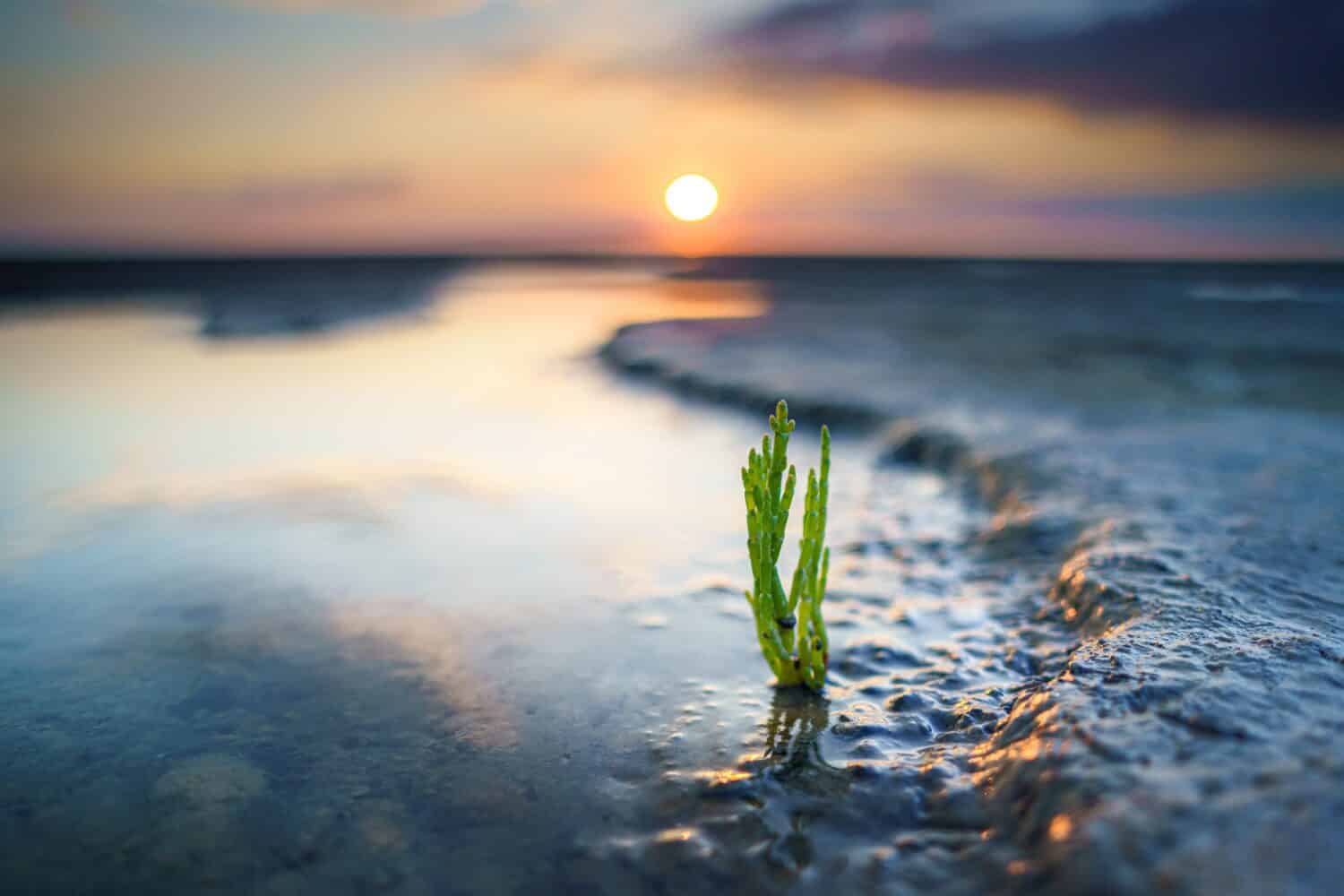
©Wirestock Creators/Shutterstock.com
Conclusion
In conclusion, the Longest Beach in Washington is the Long Beach Peninsula. It stands as one of the longest beaches in the region, stretching for approximately 28 miles along the Pacific coast. This region overflows with natural beauty and recreational opportunities. From its captivating sandy beach, shaped by ocean currents and sedimentation processes, to its diverse ecosystems comprising estuarine habitats, wetlands, and salt marshes, Long Beach Peninsula is a haven for nature enthusiasts and beach lovers. Visitors can explore attractions such as Cape Disappointment State Park, with its rugged cliffs and historic lighthouses, or indulge in outdoor activities along the beach or in the town of Long Beach. Finally, Long Beach Peninsula invites locals and visitors alike to experience the allure of its coastline and immerse themselves in the vibrant atmosphere of this captivating destination.

©Janelle Gibson/Shutterstock.com
Up Next:
"pure" - Google News
July 22, 2023 at 06:52AM
https://ift.tt/XJZT6KU
The Longest Beach in Washington Is 28 Miles of Pure Beauty - AZ Animals
"pure" - Google News
https://ift.tt/keNAUCH
https://ift.tt/OHx9mTE
Bagikan Berita Ini














0 Response to "The Longest Beach in Washington Is 28 Miles of Pure Beauty - AZ Animals"
Post a Comment